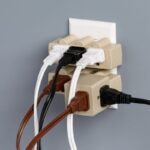Understanding the basics of pump repair will make it easier to do preventive maintenance.
For troubleshooting difficult-to-fix issues, technical manuals that include specifications such as pressure and tolerance are essential. Pump repair can also be done with general tools such as a variety of sockets, wrenches, and screwdrivers. The right lubricants, grease guns, and packing pullers can save you time and money.
Pump repairs are not only difficult with the tools mentioned above, but also require a level of knowledge to inspect and service pumps. Pump problems are usually caused by an underlying problem that often goes beyond the failure of the item. These maintenance techniques provide some basic knowledge that can be used to service pumps.
Are you having problems with your pumping? Are you having a difficult time with your Pumping? You’re in the right spot if so. We are Knoxville’s most trusted Pumping company. J&J Septic handles almost all pumps repairs and installations in Knoxville, Tennessee.
Packing
Check the packing gland for excess leakage. If necessary, repackage. If there is excessive leakage, the maintenance operator should tighten it. Water serves as the coolant in the stuffing boxes and should not be stopped completely.
Pump Repackaging
When packing a pump, make sure that both the driver and the pump are safe and sound.
It is not a good idea to add new packing on top of the old. Remove all packaging and the lantern ring. After you have removed all packing, remove the lantern ring and clean out the stuffing container. Next, inspect the shaft sleeves for any unusual wear. Use only the right tools. Never use a screwdriver. The wrong tools can cause damage to the stuffing box and shaft sleeves.
The shaft should be covered with new packing. The joint of the second packing piece should be 90 degrees from the joint in the first. Each joint should be placed 90 degrees apart from the previous one. Make sure the lantern ring is aligned with the coolant port attachment. This technique of staggering joints prevents water escaping from the joints. Continue this process until you have filled the stuffing container.
Bearings
Friction can cause overheated bearings. This can be caused by a lack or lubrication. To remove dirt and grime from bearings, it is important to clean all grease cups and fittings before inspecting them. Bearing contamination can lead to premature bearing failure and grease cup corrosion.
Follow the manufacturer’s instructions when lubricating a bearing. Bearings may heat up if they are lubricated with more grease than the recommended amount.
Before you begin to grease a bearing, take out all relief plugs. The old grease will start to drain as soon as it is pumped into the bearing. Examine the old grease for any metal particles or shavings. Any metal particles or shavings found in old grease are indicators of wear and should be removed.
Couplings
Like bearings, couplings require lubrication. When servicing couplings, make sure safety precautions are taken.
To expose the flexible grid, take off the coupling guard when performing preventive maintenance. Take the grid off and inspect it for wear. Check for any metal particles. Examine immediately the grease for any metal particles.
After determining whether the coupling can still be used or needing to be replaced, clean all parts. The grid is located on the motor’s drive end and the pump’s driven end. The couplings should be bolted in place. You should add new grease to the grease fitting until the grease is completely ejected from the relief port. Do not over-grease your coupling as it can cause damage to the rubber seal between the coupling halves.
Inspection
Preventive maintenance programs require inspections to be successful. Inspections help to identify the condition of pumps and other equipment. They also help to predict what preventive and corrective maintenance is required to avoid serious problems.
Inspection must be done regularly and cannot be ignored or falsified. Inspection should be performed every day or weekly.
When inspecting the pump, be sure to listen for unusual vibrations or noises. Pump operation is affected by vibration and should be addressed immediately to avoid serious damage and eventual failure. Vibration from the shaft, or a failing shaft coupling, can cause noisy bearings.
A checklist of inspections is a great way for you to make sure nothing is missed. Maintenance operators should have a copy past inspection data in order to compare the new findings. Maintenance operators will be able to spot any new problems or identify trends in normal operations.



